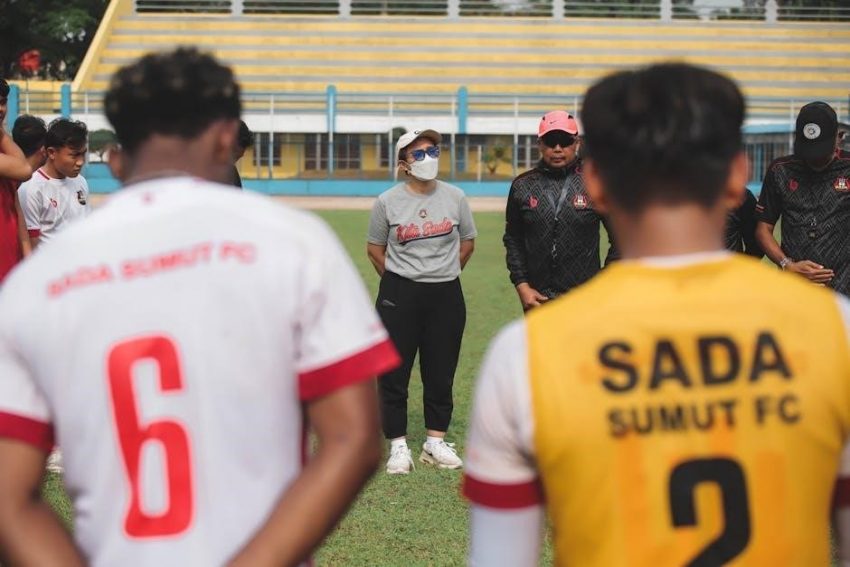Guided Practice Activities 5B-2 are structured exercises designed to enhance skill development through interactive learning. These activities focus on applying theoretical concepts to practical scenarios‚ fostering critical thinking and problem-solving abilities. By engaging with real-world applications‚ participants gain hands-on experience‚ reinforcing their understanding of key principles. This approach encourages collaborative learning‚ feedback integration‚ and iterative improvement‚ preparing individuals for complex challenges in their respective fields.
1.1 Understanding the Role of Guided Practice in Learning
Guided practice activities‚ such as 5B-2‚ play a pivotal role in learning by bridging the gap between theoretical knowledge and practical application. These structured exercises provide learners with opportunities to apply skills in controlled environments‚ receive feedback‚ and refine their understanding. By engaging in guided practice‚ individuals develop problem-solving abilities‚ critical thinking‚ and confidence‚ essential for mastering complex concepts and real-world challenges.
1.2 Importance of Activity 5B-2 in Skill Development
Activity 5B-2 is crucial for skill development as it provides practical exposure to real-world scenarios‚ enabling learners to apply theoretical knowledge effectively. This exercise strengthens problem-solving abilities‚ enhances critical thinking‚ and builds confidence in tackling complex challenges. By focusing on hands-on application‚ it ensures a deeper understanding of key concepts while preparing learners for future academic and professional demands‚ aligning with overarching learning objectives.
Boolean Operators and Search Queries
Boolean operators enhance search queries by refining results‚ ensuring precise information retrieval. They are vital in guided activities‚ improving research efficiency and accuracy for learners.
2.1 Best Practices for Constructing Effective Search Queries
Constructing effective search queries involves using Boolean operators‚ phrase searching‚ and filters to narrow results. Brainstorm keywords‚ focus on specificity‚ and avoid overly broad terms. Utilize tools like Solr for advanced querying‚ ensuring precision in retrieving relevant information. Regularly refine searches based on outcomes to enhance efficiency and accuracy in guided activities.
2.2 Common Mistakes to Avoid in Boolean Search Techniques
Common mistakes in Boolean searches include using vague terms‚ neglecting phrase searching‚ and overcomplicating queries. Avoiding the use of specific keywords and failing to test queries can lead to irrelevant results. Additionally‚ ignoring filters and operator precedence often reduces search accuracy. Recognizing these pitfalls helps refine techniques‚ ensuring more precise and efficient outcomes in guided practice activities.

Educational Frameworks and Curriculum Alignment
Educational frameworks provide structured approaches to learning‚ ensuring curriculum alignment with learning objectives and adhering to established guidelines for effective skill development in guided activities.
3.1 Aligning Activities with Learning Objectives
Aligning guided practice activities with learning objectives ensures a focused and purposeful learning experience. By mapping each activity to specific outcomes‚ educators ensure that students develop targeted skills and knowledge. This alignment also helps in assessing progress effectively‚ as activities are designed to meet measurable goals‚ fostering a coherent and structured approach to education.
3.2 The Role of Curriculum Development Council Guidelines
The Curriculum Development Council Guidelines play a crucial role in shaping educational frameworks‚ ensuring activities like 5B-2 align with broader learning objectives. These guidelines provide structured frameworks for designing engaging and effective learning experiences‚ promoting consistency and coherence in education. They also offer educators tools and resources to create activities that meet specific standards‚ fostering a structured approach to skill development and knowledge acquisition.
Advanced Search Techniques for Research
Advanced search techniques enhance research efficiency by utilizing tools like Boolean operators‚ phrase searching‚ and filters. These methods refine query results‚ ensuring relevance and precision in finding information.
4.1 Utilizing Phrase Searching and Filters
Phrase searching and filters refine search queries by targeting specific terms and narrowing results. Using quotation marks for exact phrases ensures precise matches‚ while filters like date ranges or file types further customize outcomes. These techniques enhance research accuracy and efficiency‚ making it easier to locate relevant information quickly. They are particularly useful in academic and professional settings where detailed data retrieval is essential.
4.2 Enhancing Research Efficiency with Advanced Tools
Advanced tools like search engines and specialized software optimize research processes. These tools offer features such as query optimization‚ result customization‚ and data visualization‚ streamlining information retrieval. By leveraging these technologies‚ researchers can quickly access relevant data‚ reducing time spent on manual searches. Such tools are particularly beneficial in academic and professional environments‚ where efficient and precise information gathering is critical for success.

Technology Integration in Guided Practices
Technology integration in guided practices provides learners with diverse digital tools and resources‚ enhancing engagement and collaboration. Interactive platforms and software enable personalized learning experiences‚ fostering deeper understanding and skill mastery.
5.1 Tools and Resources for Effective Learning
Guided Practice Activities 5B-2 leverage digital tools like search engines‚ educational software‚ and online platforms to enhance learning. Boolean operators‚ phrase searching‚ and filters streamline resource discovery. Interactive simulations‚ real-time feedback‚ and collaborative features foster engagement and skill mastery. These tools support personalized learning‚ enabling students to explore concepts in-depth and apply knowledge to practical scenarios.
5.2 The Impact of Digital Platforms on Activity Engagement
Digital platforms significantly enhance engagement in Guided Practice Activities 5B-2 by providing interactive and accessible learning experiences. Real-time feedback‚ multimedia elements‚ and collaborative tools foster active participation. These platforms also enable personalized learning‚ allowing students to explore concepts at their own pace. The integration of technology creates a dynamic and inclusive environment‚ promoting deeper understanding and motivation among learners.

Assessment and Feedback Strategies
Effective assessment and feedback strategies in Guided Practice Activities 5B-2 involve using feedback loops to evaluate progress and provide constructive criticism‚ enhancing learning outcomes and skill mastery through iterative improvement.
6.1 Evaluating Student Progress in Guided Activities
Evaluating student progress involves tracking participation‚ task completion‚ and mastery of skills. Regular assessments ensure alignment with learning objectives‚ while feedback loops help identify strengths and areas needing improvement. This iterative process supports personalized learning‚ fostering growth and understanding. By monitoring progress‚ educators can adjust activities to meet diverse needs‚ ensuring each student achieves their full potential in a structured environment.
6.2 Providing Constructive Feedback for Improvement
Constructive feedback is essential for guiding students toward improvement. It involves clear‚ specific comments that highlight strengths and areas for growth. By linking feedback to learning objectives‚ educators help students understand expectations and identify next steps. Regular‚ actionable insights encourage reflection and refinement‚ fostering a growth mindset and enhancing overall performance in guided practice activities.
Cultural and Individual Learning Needs
Addressing diverse learning requirements ensures inclusive education. Tailoring activities to individual and cultural needs promotes engagement and effectiveness in guided practice‚ fostering an equitable learning environment.
7.1 Addressing Diverse Learning Requirements
Guided Practice Activities 5B-2 emphasize inclusivity by accommodating varied learning styles and cultural backgrounds. These activities incorporate adaptable strategies‚ ensuring each participant can engage effectively. By integrating resources that cater to different needs‚ they promote equitable learning opportunities. This approach not only enhances individual understanding but also fosters a collaborative environment where diverse perspectives enrich the learning process.
7.2 Tailoring Activities for Inclusive Education
Activities 5B-2 are designed to be flexible‚ allowing customization to meet individual learning needs. By incorporating varied instructional strategies and digital tools‚ educators ensure all students can participate meaningfully. This tailored approach supports differentiated instruction‚ enabling learners to access content in ways that suit their abilities. Inclusive education is prioritized‚ creating an environment where every student feels valued and empowered to succeed.

Collaborative Learning and Pair Programming
Collaborative learning fosters teamwork and problem-solving skills‚ while pair programming enhances technical abilities through real-time collaboration. These methods encourage shared learning experiences‚ aligning with the practical goals of guided practice activities.
8.1 Benefits of Collaborative Problem-Solving
Collaborative problem-solving enhances technical skills‚ improves communication‚ and fosters teamwork. It allows individuals to learn from one another’s strengths and approaches‚ promoting a deeper understanding of complex concepts. By sharing perspectives‚ participants can identify innovative solutions and refine their critical thinking abilities. This method also builds confidence and adaptability‚ preparing learners for real-world challenges in dynamic environments.
8.2 Implementing Pair Programming in Practice Activities
Pair programming involves two developers collaboratively working on one computer‚ with one coding while the other reviews and provides feedback. This method enhances code quality by reducing errors and fostering knowledge sharing. It also promotes problem-solving through diverse perspectives and encourages real-time feedback‚ accelerating learning and improving teamwork. Regular implementation in guided practices strengthens technical skills and adaptability‚ preparing learners for collaborative environments.
Real-World Applications of Guided Practices
Guided practices connect theoretical concepts to practical scenarios‚ enabling learners to apply skills in real-world contexts. This approach enhances problem-solving and critical thinking‚ preparing individuals for industry challenges.
9.1 Connecting Activities to Practical Scenarios
Guided Practice Activities 5B-2 bridge theoretical knowledge with real-world applications‚ enabling learners to apply concepts in practical contexts. By simulating real-life challenges‚ these activities enhance problem-solving skills‚ preparing individuals to address industry-specific scenarios effectively. This approach fosters critical thinking and adaptability‚ ensuring learners are well-equipped to handle complex tasks in professional environments.
9.2 Fostering Critical Thinking and Problem-Solving Skills
Guided Practice Activities 5B-2 are designed to enhance critical thinking and problem-solving skills through interactive and practical exercises. Learners engage in real-world scenarios‚ analyzing challenges and developing innovative solutions. These activities promote analytical reasoning‚ encouraging participants to approach problems from multiple perspectives. By refining their ability to evaluate information and make informed decisions‚ learners build a strong foundation for tackling complex tasks in various fields.
Feedback Mechanisms and Iterative Improvement
Feedback mechanisms in guided practice activities 5B-2 enable iterative improvement by providing constructive insights. Learners refine their skills through continuous cycles of feedback‚ revision‚ and reassessment‚ fostering mastery and proficiency.
10.1 The Role of Feedback in Learning Outcomes
Feedback plays a pivotal role in shaping learning outcomes by providing learners with insights into their performance. It guides learners in identifying strengths‚ addressing weaknesses‚ and refining their skills. Constructive feedback fosters a continuous cycle of improvement‚ enabling learners to align their efforts with desired outcomes. By clarifying expectations and encouraging reflection‚ feedback enhances retention‚ understanding‚ and the application of skills‚ ultimately driving meaningful progress in guided practice activities.
10.2 Continuous Improvement Through Iterative Processes
Iterative processes in guided practice activities involve repeating cycles of task completion‚ feedback‚ and refinement. This approach allows learners to apply feedback‚ refine their skills‚ and achieve mastery. Each cycle builds on the previous one‚ fostering continuous improvement and enhancing problem-solving abilities. Iterative learning ensures that skills are polished through consistent practice and adaptation‚ leading to improved efficiency and effectiveness.
Case Studies and Success Stories
Guided Practice Activities 5B-2 have shown success in enhancing learning outcomes through real-world applications‚ demonstrating effective implementation strategies and improved problem-solving skills in diverse educational settings.
11.1 Examples of Effective Guided Practice Implementation
Guided Practice Activities 5B-2 have been successfully implemented in various educational settings‚ demonstrating improved learning outcomes. For instance‚ institutions integrating these activities reported enhanced critical thinking and problem-solving skills among students. Real-world applications‚ such as pair programming and curriculum-aligned exercises‚ have shown measurable success in fostering collaboration and feedback-driven improvement‚ making these activities a valuable tool in modern education.
11.2 Lessons Learned from Real-World Applications
Real-world applications of Guided Practice Activities 5B-2 highlight the importance of feedback mechanisms and iterative improvement. These activities have shown that leveraging digital platforms enhances engagement and accessibility. Tailoring exercises to diverse learning needs fosters inclusivity‚ while aligning activities with curriculum objectives ensures relevance and effectiveness. Continuous refinement based on outcomes underscores the value of adaptive learning strategies in achieving desired educational goals.
Future Trends in Guided Practice Activities
Future trends in Guided Practice Activities 5B-2 include integrating emerging technologies like AI and VR for immersive learning‚ personalized learning experiences‚ and advanced search tools for efficiency.
12.1 Emerging Technologies and Their Impact
Emerging technologies like AI‚ VR‚ and machine learning are transforming guided practice activities‚ offering personalized learning experiences and interactive simulations. These tools enhance engagement‚ provide real-time feedback‚ and cater to diverse learning needs. Advanced search capabilities and adaptive learning platforms optimize resource utilization‚ making learning more efficient and accessible. Such innovations are reshaping the future of skill development and education‚ ensuring better outcomes for learners.
12.2 Evolving Approaches to Skill Development
Evolving approaches to skill development emphasize personalized learning‚ adaptive technologies‚ and collaborative methods. Guided practice activities now integrate AI-driven tools for tailored experiences‚ while interactive simulations enhance practical application. Data analytics provide insights into learning behaviors‚ optimizing activity design. These advancements promote dynamic skill acquisition‚ fostering critical thinking and adaptability. They ensure learners are well-prepared to tackle future challenges in an ever-changing environment.

